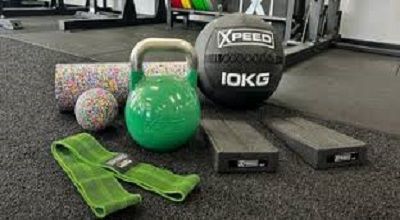Fitness program design
Designing an effective fitness program involves considering various factors, including your fitness goals, current fitness level, preferences, and any potential health considerations. Here is a step-by-step guide to help you design a fitness program:
1. Define Your Goals:
- Specificity: Clearly outline your fitness goals. Are you aiming for weight loss, muscle gain, improved cardiovascular health, flexibility, or a combination of these?
2. Assess Your Current Fitness Level:
- Fitness Assessment: Evaluate your current fitness level to identify strengths and weaknesses. This may include cardiovascular fitness, muscular strength, flexibility, and body composition.
3. Choose the Right Exercises:
- Cardiovascular Exercise: Include activities like running, cycling, swimming, or dancing for aerobic fitness.
- Strength Training: Incorporate resistance training exercises targeting major muscle groups.
- Flexibility Training: Include stretches or yoga to improve flexibility and reduce the risk of injury.
4. Create a balanced routine:
- Frequency: Determine how often you’ll work out each week.
- Intensity: Gradually increase the intensity of your workouts as your fitness improves.
- Duration: Set the length of your workouts based on your schedule and fitness goals.
5. Consider Your Preferences:
Enjoyment: Choose activities you enjoy to increase adherence to your program.
- Variety: Include a mix of activities to prevent boredom and target different muscle groups.
6. Include Rest Days:
- Rest and Recovery: Allow your body time to recover to prevent overtraining and reduce the risk of injury.
7. Warm-Up and Cool Down:
- Warm-Up: Include dynamic stretches and light aerobic exercise before your main workout to prepare your body.
- Cool Down: Perform static stretches to improve flexibility and reduce muscle soreness.
8. Progression:
- Gradual Progress: Increase the intensity, duration, or frequency of your workouts gradually to avoid plateaus and reduce the risk of injury.
9. Listen to Your Body:
- Adaptability: Modify your program based on how your body responds and any feedback from your healthcare provider.
10. Seek Professional Guidance:
- Consultation: If you’re new to exercise or have specific health concerns, consider consulting with a fitness professional or healthcare provider.
11. Monitor and Track:
- Keep a Log: Track your workouts, noting the exercises, sets, reps, and weights used. This helps you monitor progress and make adjustments.
12. Nutrition and Hydration:
- Balanced Diet: Support your fitness program with a well-balanced diet, ensuring you get the necessary nutrients.
- Hydration: Drink an adequate amount of water before, during, and after exercise.
Final Words
At last, consistency is key when it comes to fitness. Adjust your program as needed, stay committed, and celebrate your achievements along the way. If you have any health concerns, consult with a healthcare professional before starting a new fitness program.
